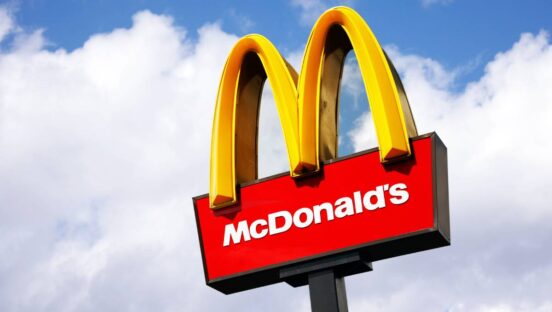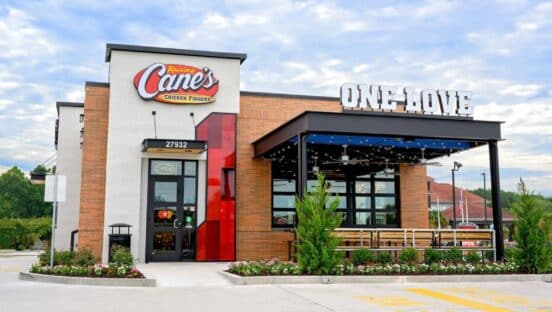The pandemic rocked the restaurant industry in 2021 and 2022, closing many eateries, reducing revenue for the survivors, and curtailing employment. When indoor dining was prohibited in many locations, off-premises skyrocketed and has continued to do well. But in 2023, and looking into 2024, the industry is bouncing back, and making adjustments, especially in technology.
During the pandemic, restaurant employment declined by 6 million jobs and lost $300 billion in sales compared to expected levels, explains Hudson Riehle, the National Restaurant Association’s senior vice president of the Research and Knowledge Group. In 2023, the forecast was restaurant sales would reach $997 billion, which he says shows a reviving industry. Though this is still 11 percent below where the industry was in 2019, before the pandemic hit.
One other major adjustment has been in menu prices, which ran almost 8 percent higher in 2023 compared to 2022. Riehl attributes that increase to a rise in restaurant budgets, based on food, labor, and operating costs. For many brands, the cost of rent, insurance, and credit card fees has been spiking, so raising prices was mandatory to keep pace.
MORE 2024 TRENDS:
The Restaurant Lessons We Learned in 2023
Restaurants Brace for the Most ‘Normal’ Year Since 2019
What’s the Big Restaurant Tech Trend Nobody is Talking About Yet?
2024 Restaurant Outlook: A Year of Growth, Costs, and Winning Over Guests
Fast-Food Trends for 2024: The Age of Automation and Customer Experience
What the Past Tells Us About What’s to Come for Restaurants in 2024
The Restaurant Innovations Here to Stay in 2024
10 Trends Reshaping Restaurants as 2024 Arrives
Prompted by what happened during the pandemic when consumers were reluctant to dine in, off-premises sales continue to increase and likely will keep rising. Fast and convenient are the new mantra of many consumers, driven by the reliance on drive-thrus, curbside pickup, mobile app ordering, and delivery.
Hence, Riehl says technological advances are helping restaurateurs adapt to consumer tastes. He notes that in the front of the house, tablets, kiosk ordering, and electronic menu boards are becoming commonplace, and in the back of the house, supply chain tracking and ordering and automated kitchen systems expedite operations. It doesn’t reduce staff but makes operations more efficient.
Two movements that Riehle says started in 2023 and likely will continue to rise in 2024 are the increase in breakfast sales and afternoon snacking. Breakfast is booming because of the increase in employment numbers, exemplified by 330,000 new jobs created in September 2023 alone. “When someone is employed and has less time at home and has additional income to spend, it creates additional business for restaurants,” Riehl says.
Afternoon snacking leads to consumers ordering specialty coffee drinks like pumpkin spice lattes or even an afternoon burger before dinner because they’ve skipped lunch, he suggests.
In some metropolitan areas, but not all, the ability to take out liquor for the first time, is also boosting revenue.
David Portalatin, an SVP and food adviser at Circana, describes 2023 as “a year of recovery” for the restaurant business. Customer traffic increased by one-half a percent since 2022, but quick-service food recovered faster. He expects 1 percent traffic growth in 2024 over 2023, which in an industry that had declining revenue, is a positive sign.
Overall, he says, consumers are more “home-centric than they were in the past.” He notes that on any given day 50 percent of the workforce stays at home; therefore, consumers prepare more meals at home and also have a greater tendency to pick meals up at a fast-casual eatery.
Despite the rise in off-premises dining, some consumers still crave experiential dining, though baby boomers prefer dining in more so than millennials or Gen-Xers do.
Restaurant franchises, post-COVID, have been holding their own as well and were predicted to rise 2.5 percent by the end of 2023, explains Michael Layman, the SVP of government relations and public affairs at the International Franchise Association. “When unemployment increases, people re-evaluate what they do for a living and look at franchises as an opportunity to be your own boss,” he says.
During COVID, 30,000 franchises shuttered, but many franchise brands helped franchisees survive and overcome the obstacles. “Having a brand partner that has more know-how and firepower” and one that encouraged operators to enroll for PPP (Paycheck Protection Program) and tax forgiveness programs contributed to their survival, Layman says.
Major issues that surfaced for restaurant franchisees in 2023—and remain— are workforce challenges, finding and keeping skilled workers, and inflation. Working with brand partners via job banks and availability of resumes have helped attack the problem.
Restaurants are turning increasingly to technology so they can use QR codes, encourage mobile payment, digital app ordering, and drive-thrus.
Portalatin notes that burger, pizza, and taco chains have performed well, but a new crop of chicken specialty menu items have become favorites including crispy chicken sandwiches, chicken nuggets, and chicken strips.
But growth in 2024 will vary due to population shifts and where people are moving. Riehl says the fastest-growing population centers tend to be in the West and Southeast, and certain cities in Texas, such as Houston, Austin, and Dallas are seeing steady population growth.
Many Gen Xers and millennials are gravitating toward healthier items such as açai and grain bowls and smoothies, exemplified by the growth of Smoothie King, Vitality Bowls, and Tropical Smoothie Cafe. Riehl notes that Association research indicates four out of five adults have an openness to choosing healthier food and beverage items.
Although restaurants face lowering margins due to the rise of third-party deliverers such as DoorDash, Grubhub, and Uber Eats, aggregators are seeing growth.
Because consumers are under intense economic pressure because of rising credit card debt, high interest rates, and costlier rents for apartments, Victor Fernandez, Black Box Intelligence’s VP for insights and knowledge, predicts a slowdown across the industry in the coming year. He adds that quick-service restaurants and fast casuals have held their own better than most full-service eateries, but they too will feel economic sluggishness.
Fernandez says most mid-priced family concepts and casual-dining restaurants have fared the worst compared to the grab-and-go spots. “You might not go to Chili’s but may pick up from Chipotle,” he says, by example.
What casual-dining locations must do to compete is to offer incentives to make dining more appealing, such as a free appetizer or dessert, and make the experience truly hospitable. “How do you make the customer feel special?” is what sit-down restaurants must answer to win customers back and retain them, he says.
How will 2024 fare for the restaurant industry? Fernandez says, “It all depends on the economy. If inflation comes down, interest rates come down, employment continues to be strong, we could see a decent year.”














